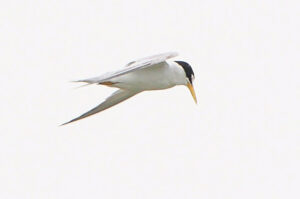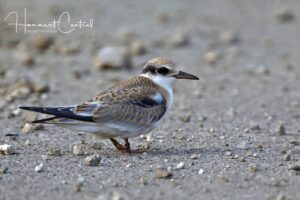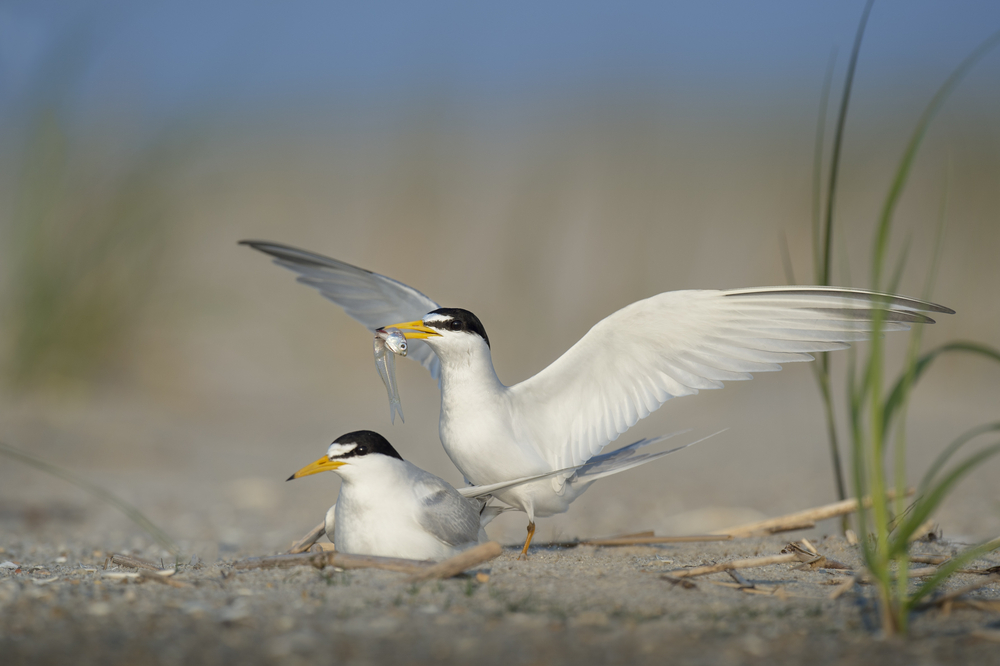Least Tern, Sternula antillarum
Bill Rowe
Of all the gulls and terns that show up on Missouri’s waterways, the handsome little Least Tern is the only one that nests in our state. Its story, in recent decades, is really positive but requires some explanation, as follows: Least Tern habitat throughout the interior U.S. is limited to sand and gravel islands or shores along major rivers, or sometimes other habitats that resemble those, such as salt pans or gravel rooftops (!). Least Terns also breed on islands and beaches around our Atlantic, Gulf, and southern Pacific coasts, but the birds in the interior have been considered a separate subspecies, or at least a special distinct population, and were among the first birds investigated by the U.S. Fish and Wildlife Service after the passage of the Endangered Species Act in 1973. They found that these terns did seem to be in trouble all over their range along rivers like the Mississippi, the Missouri, the Platte, and many others in a number of states, and so the Interior Least Tern was formally listed as Endangered in 1985. As always, the Service set up a number of criteria that needed to be met if there was to be a successful recovery, using a lot of specific data about the size and stability of the various nesting colonies throughout the eighteen states involved. Lo and behold, those criteria have been met and, in fact, far exceeded—the population has increased to an estimate of 18,000 birds in well over 400 colonies—and therefore this species was just de-listed as of February 2021. This doesn’t mean that Least Terns are abundant (remember that those colonies are spread over a vast area) or that they don’t need to be monitored any more, but it certainly counts as a conservation success.
IDENTIFICATION: Adults are unmistakable, as our smallest terns (about the body size of a robin) with long narrow wings, fast wingbeats, a white forehead, and a bright yellow bill. Juveniles show a gingery-brown color and a scaly, barred pattern on the wings and back.
ST. LOUIS STATUS: Formerly rare but now a regular breeding species at Riverlands Migratory Bird Sanctuary. Elsewhere in Missouri, known to nest mainly along the Mississippi in the southeast. At Riverlands, one or more flat barges are anchored out in the water, with wire fencing and a sandy substrate for the nests; some experience with predation by raccoons and Great Blue Herons has led to improvements, and the terns raise a number of young most years. They may be watched at leisure as they plunge-dive to catch small fish around the area and travel back and forth to supply their young with a meal, either on the barge or wherever an already-mobile juvenile may be resting. The height of this activity is right now, in July, and the birds are banded in hopes of keeping track of some of them in the future.
Learn more and listen to the calls of Least Terns here.


Adult in flight
Photo Credit: Al Smith
Juvenile, fledged and banded
Photo credit: Doug Hommert




